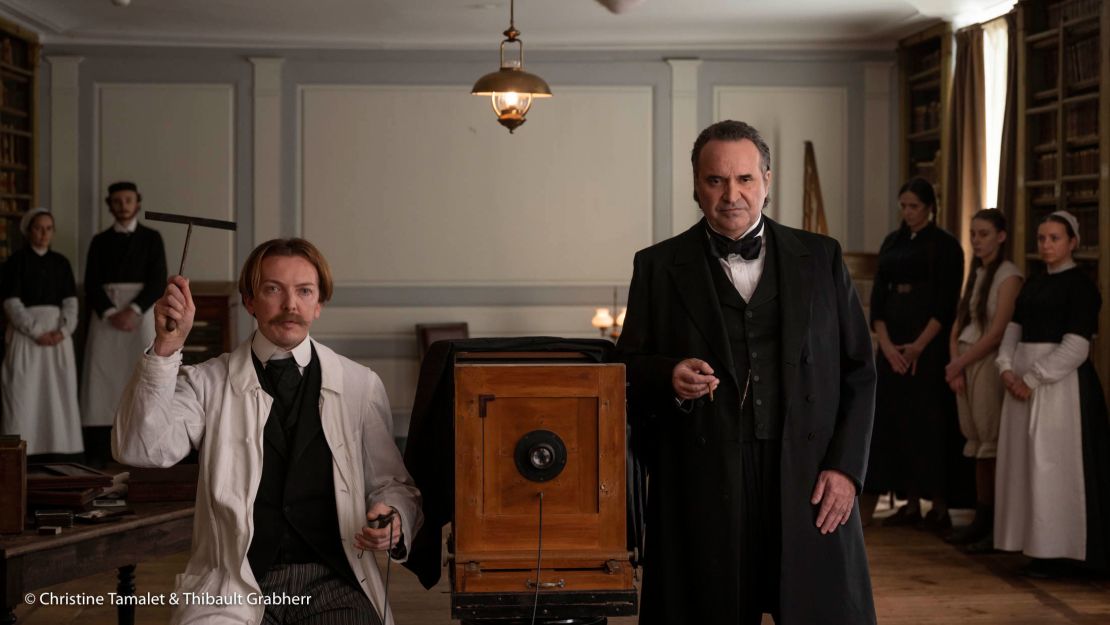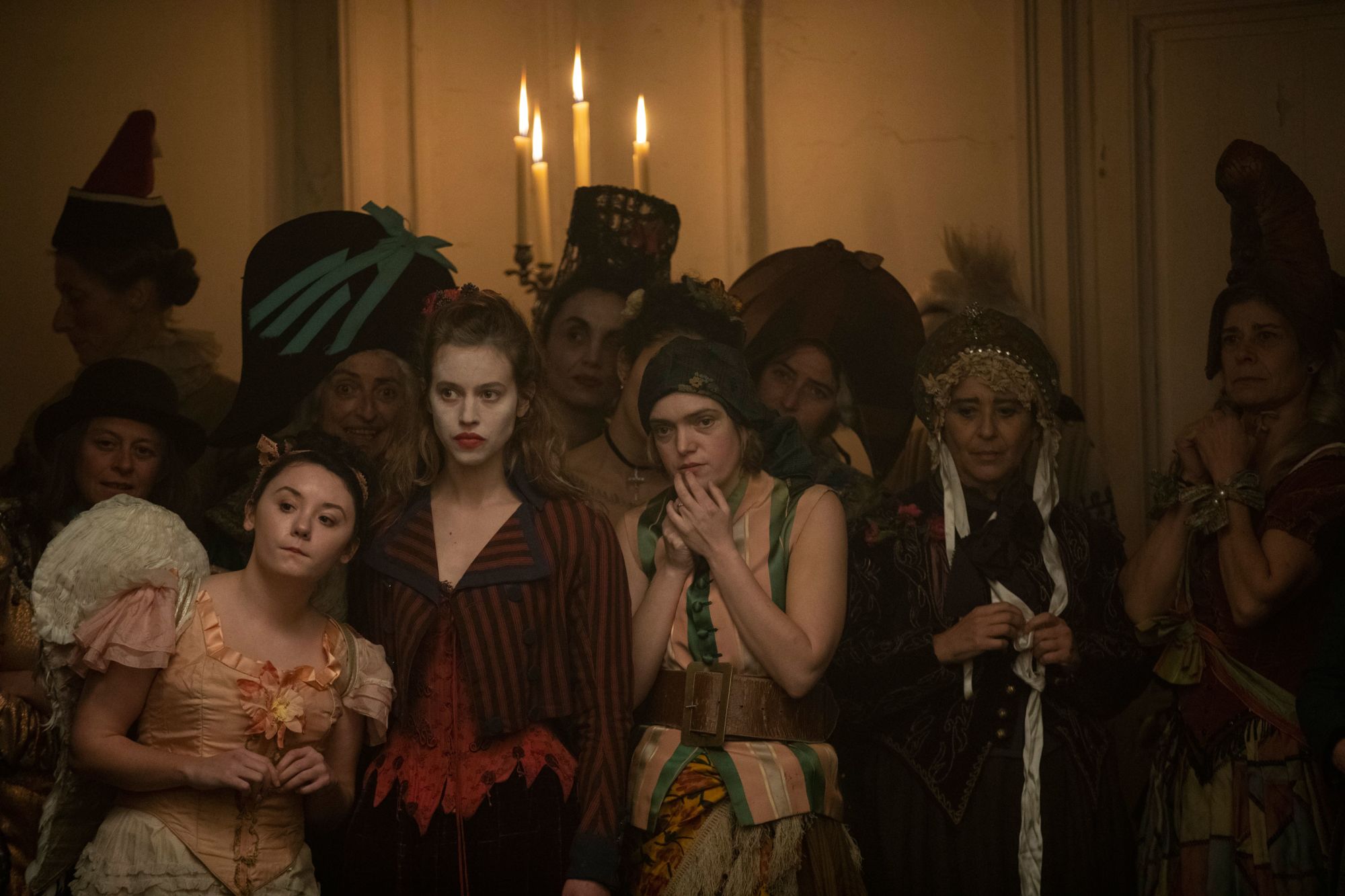Editor’s Note: Keeping you in the know, Culture Queue is an ongoing series of recommendations for timely books to read, films to watch and podcasts and music to listen to.
It’s a tale as old as time: A woman won’t conform to societal norms, traditional notions of femininity or what’s expected of her, and is dismissed as diseased. She’s considered hysterical. And, as such, she is locked up, burned at the stake, hidden away or placed under the supposedly steadier control of men.
It’s played out in real life, as well as in countless books, TV shows and movies. The French Amazon original feature “The Mad Women’s Ball,” which premiered at the Toronto International Film Festival and is out on Amazon Prime today, is the latest addition to the canon.
Directed and scripted by Melanie Laurent, and based on Victoria Mas’ novel of the same name, the richly cinematic costume drama follows the story of Eugénie Cléry (Lou de Laage), a well-heeled French girl living in Belle époque Paris in 1885. Eugénie is smart, an avid reader and a rebellious character with an interest in spiritualism. She also sees dead people.

Her disregard for convention proves too much for her family. Against Eugénie’s will, and to the heartbreak of her doting brother (Benjamin Voisin), her father Fran?ois (Cédric Kahn) commits her to a sinister neuro-psychiatric clinic, the infamous – and real-life – Pitié-Salpêtrière Hospital. It is an institution where women deemed unfit for public life would be “hospitalized” and subjected to clinical surveillance and experimental treatments led by celebrated neurology pioneer Dr. Charcot (Grégoire Bonnet).
Here, Eugénie finds herself among other “mad” women, many of whom have been driven to depressive or psychotic states by the same men who claim to be looking after them.
There’s Louise (Lomane de Dietrich), who was sent to the asylum after speaking up about her sexually abusive uncle, only to be harassed by one of the doctors; Marguerite (Lauréna Thellier), a former pickpocket and sex worker who “suffers” from outbursts of rage; and Therese, an older woman who was brought to the hospital for pushing her husband into the Seine River.
Whether mentally ill or simply victims of trauma, abuse or exploitation, the patients are treated like objects to be prodded and studied, spotlighting the misogyny of early neuroscience and medicine at large. (While the concept of “hysteria” emerged in the medieval period, it became prominent in European medicine and culture in the 19th century.)
One of the movie’s most overt displays of this dehumanization – the “Mad Women’s Ball” – is based on an actual event where, for one night only, the upper echelons of French society were invited to gawk at the clinic’s residents dressed up in their finery.
As she’s put under the care of the sanatorium’s head nurse Geneviève (played by director Laurent herself), Eugénie struggles to adapt to life at Salpêtrière. She is adamant she doesn’t belong in the institution – although she slowly comes to question what – and who – exactly, is mad: her fellow prisoners inside, or those outside, exerting control and showing no empathy?

When the spirit of a nurse’s dead sister begins communicating with Eugénie, Geneviève, too, starts wondering where madness lies and whether a world beyond the tangible might be possible after all.
For Laurent, Eugénie’s story – and that of the women she befriends – felt like a timeless one. “I wanted to make a movie about witches in the Middle Ages, as I have always been fascinated by that part of history,” she said in a video interview. “Then my producer sent me the ‘Mad Women’s Ball’ book, and I thought it was incredibly powerful. It was horrifying to see that, 300 years on, women who dared to be different and who could have made society more interesting were still made silent.”
The way Laurent portrays this imposed silence is one of the most compelling aspects of the movie. Scenes focusing on the female patients’ experience of the patriarchal institution and its dystopian system of oppression are among the production’s sharpest and most enraging – and an uncomfortable reminder of how our culture has long demonized the “hysterical woman.”
But “The Mad Women’s Ball” also triggers a different kind of ethical negotiation for the viewer. For all her quick-wittedness, Eugénie’s ability to speak with the dead is hard to understand for anyone who values science over faith. On paper, she’s not “well,” yet calling her insane doesn’t seem fitting either. This duality makes her character – and the movie – all the more challenging, as we’re asked to grapple with the rational and the irrational, the acceptable and the otherworldly.
“Eugénie is delicate and fragile, but she’s also very strong,” Laurent said. “She goes against the crowd because she is against the crowd. I wanted to emphasize that.”
As Geneviève starts rejecting the rules of Salpêtrière and decides to help Eugénie, the emotional connection between the two women ultimately frees them both from some of the constraints – societal and cultural – they’ve struggled against, helping them find their self-worth in a male-centeric world.
Add to Queue: Female hysteria in focus
WATCH: “Augustine” (2012)
It’s the same setting – the Pitié-Salpêtrière Hospital – but a different take on Dr. Charcot and his experimental methods to “cure” women. Alice Winocour’s movie “Augustine” is based on the true story of a 19-year-old maid prone to inexplicable displays of “hysteria” (very possibly epileptic fits) who became one of the neurologist’s most renowned patients. After a seizure leaves her paralyzed on one side, Augustine is shipped off to the all-female psychiatric clinic, where Charcot begins using her as his principal subject, hypnotizing her in front of an enthralled audience of male physicians to demonstrate his theories on madness and neurosis. As Charcot and Augustine’s relationship continues, the boundary between doctor and patient starts to blur.
READ: ‘Mad, Bad and Sad: Women and the Mind Doctors’ (2008)
Lisa Appignanesi’s ambitious, richly researched book explores the history of studying the female mind, investigating why women through the years have been categorized as “mad,” “bad” and “sad” far more often than men. Mixing evocative case studies – including Zelda Fitzgerald, Marilyn Monroe and Virginia Woolf – with medical theories by Freud, Lacan and “feminine psychology” pioneer Karen Horney, it’s a great dive into the complex history of mental illness.
WATCH: ‘Black Swan’ (2010)
Darren Aronfonsky’s story of madness isn’t set in an asylum, but the way it addresses desire, mental illness and personal demons – whether imagined or real – offers a contemporary take on the “hystericized” woman. Nina Sayers is a professional dancer who gets tapped by her troupe’s manipulative director to play the Swan Queen. The role consists of two personas: the sweet, virginal White Swan awaiting her prince, and the sexually provocative Black Swan, who lures the prince away. But the dichotomy proves too much for the already troubled ballerina, who soon starts having terrifying visions of her body’s metamorphosis into a swan.
READ: ‘The Fever’ (2014)
A former US factory town called LeRoy, between Rochester and Buffalo in New York state, made headlines in 2012 when 14 girls and one boy were afflicted with undiagnosed verbal and physical tics, in what was described as an episode of mass hysteria. Inspired by that event, Megan Abbott’s literary thriller chronicles a high school hysteria outbreak through the eyes of teenage Deenie, examining how the “contagion” unravels friendships, families and the community.
READ: ‘The Yellow Wallpaper’ (1892)
In this harrowing short story, American writer Charlotte Perkins Gilman tells the tale of a young married woman suffering from a “temporary nervous depression” and “a slight hysterical tendency” after giving birth (yes, that would be postpartum depression). Her husband, a doctor, diagnoses her, prescribing her a radical rest “cure” that involves separating her from her baby and confining her to the top-floor nursery of a rented country house. Gilman wrote the book based on her own personal experience, after she was sent to a women’s mental health clinic for her postpartum depression.
